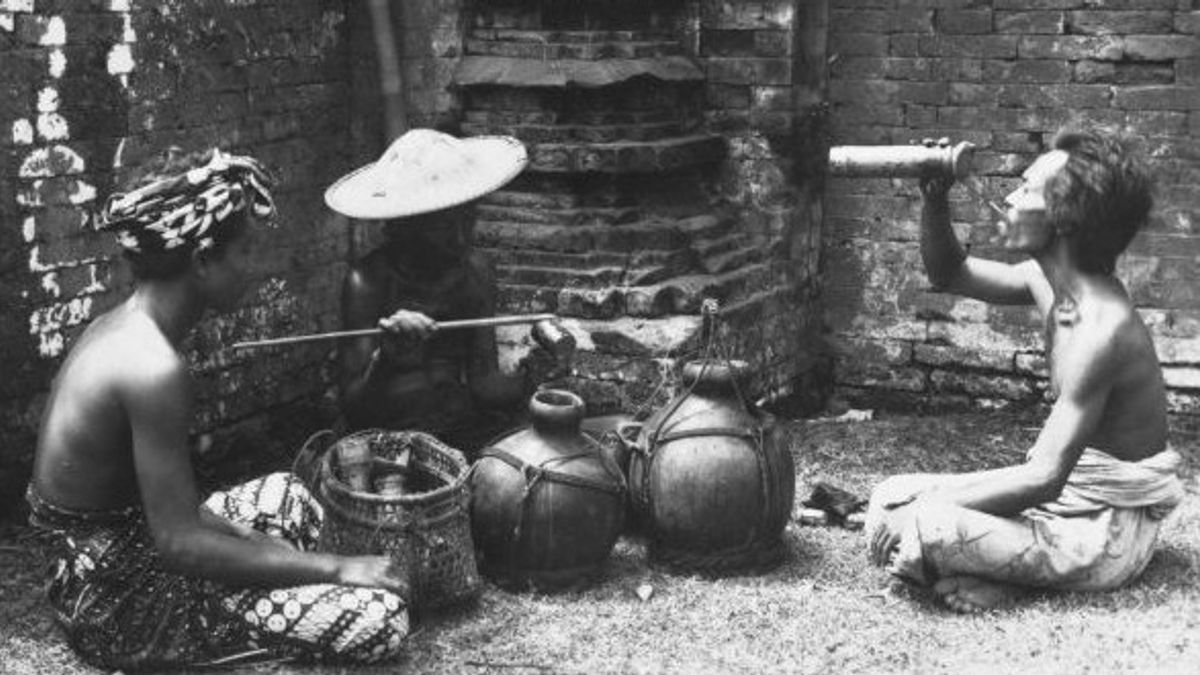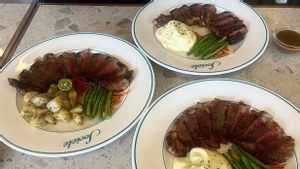JAKARTA - Liquor (miras) is a form of Indonesia's diversity. Different regions, different alcohol produced. Tuak, for example. Each region has its own characteristics. Not just drunk. Tuak is a complement to rituals. Tuak is also a melting agent for discussion.
On Sumtera Island, tuak is made from palm sap and coconut. On the island of Java tuak is made from palm sap. The most interesting thing is that tuak is not only a thirst quencher. At one time, tuak was chosen as a complement to past rituals, especially for rituals of kings, so that it was used as a liquid for the diplomatic and dialectic natives.
China's influence in making tuak is so great. This is evidenced by the existence of the oldest historical records from the T'ang Dynasty (618-907). The note contains the method of making tuak in Ka-ling (Java region). Tuak is known to be a drink processed from coconut flower water.
The raw material for tuak comes from coconut sap. It is said that the local people made liquor from the flowers of coconut trees that were up to three feet long. This flower is cut, the water is collected into alcohol. The taste is very sweet. But it gets drunk very quickly.
"They make wine (tuak) from the hanging coconut tree flowers. If they drink it, they get drunk quickly. The taste is sweet and intoxicating, ”added WP Groeneveldt in the book Nusantara in Chinese Notes (2018).
The manufacturing process is not far from the tuak produced in various other places in the archipelago. The technique of tapping sap from the palm family mayang (flower stalk) as recorded in the oldest records of the T'ang Dynasty is also present in Batak Toba.

"In the Toba Batak area, the tuak of which is produced from palm tree sap (bago) the tappers are called paragat, which comes from the word agat, which is a kind of knife used when tapping sap from palm sugar (bagot)," archaeologist Ery Soedewo wrote in a journal. Food Trails in Archeology entitled Local Genius Nusantara Products Named Tuak (2009).
"The process begins with repeatedly beating the palm bunches with a wooden tool called balbal-balbal for several weeks, then cutting the branches. Then the ends of the bunches are wrapped for two to three days with a mixture made of pounded whiting or taro," equipped.
It is through this procedure that the sap flows smoothly. Then, a paragat taps palm wine twice a day, that is, in the morning and evening. The sap that was collected in the morning was collected at the paragat house.
After testing the taste, Paragat put in the sap a kind of bark called raru. The goal is to control the taste and the tuak alcohol. Raru is what causes fermentation in the process of making tuak.
The existence of tuak in the archipelago
The existence of tuak in the archipelago was followed by a large number of alcoholic beverages. This fact fulfills the inscriptions in the Hindu-Buddhist era from the 10th to 14th centuries. This means that the existence of tuak has advanced from the time of the Ancient Mataram Kingdom to Majapahit.
Some of them are the Taji inscription issued by the King of Mataram, Wakutura Dyah Balitung (901 AD); Kembang Arum inscription (902 AD); and the Rukam inscription (AD 907).
"The three inscriptions from the ancient Mataram period mention tuak in addition to various other types of food and drink, which were served when the determination of a sima (land for cultivation / tax free). In the solemnity of the sima determination ceremony, it was also enlivened by various types of entertainment played by, among others, drum players (mapadahi), canang players (régang), singers (mawidu), and so on, ”wrote Ery Soedewo.
Not only that, written sources related to tuak were also summarized by Mpu Tantular in his masterpiece Kakawin Sutasoma in the 14th century. Mpu Tantular describes many stories at the peak of the Majapahit kingdom's heyday, when he was under the banner of Hayam Wuruk leadership. At that time, the king's guests who visited were treated luxuriously. One of the things that must be present at the banquet is tuak.
“All of King Kasi's companions have received an abundant share of the rice. Tuak, badèg, waragang, refinery, brêm, tampo flow without stopping. In the end, it's indescribable. After the king returned with Sri Jinamurti sitting at the front, they arrived at the castle, ”said Mpu Tantular.
[/ read_more]
Complementary rituals and discussions

The description of the activities that accompany tuak is not only for fun. Tuak in ancient times was often used in sacred activities. A written source that can be traced is the Pararaton Book (1613).
In the book mentioned by Raja Singhasari, Kertanegara is described as a pijer anadah sajeng (fond of drinking tuak) drunk tuak in the Buddhist Tanrayana ritual. Then, he died because he was attacked by his enemy.
Basically, the ritual aims to find the zero point of emptiness with the help of alcohol. Incidentally, what was used at that time was tuak. Therefore, tuak was then paripurna known as an alcoholic drink that serves as a complement to rituals in the archipelago. Moreover, besides ritual, this drink is widely known to be the "lubricant" of diplomacy and dialectics.
"Drinking tuak is a tradition of the Batak people which is carried out throughout the afternoon after their daily activities have been completed. The tradition of drinking tuak takes place in tuak stalls (lapo), and the place becomes an arena for interaction among Batak people and discuss various matters from household to social and political matters. That's from a positive perspective, "Herman Hidayat concluded in his book Deforestation and Social Resilience (2019).
MEMORY Other[/ read_more]
The English, Chinese, Japanese, Arabic, and French versions are automatically generated by the AI. So there may still be inaccuracies in translating, please always see Indonesian as our main language. (system supported by DigitalSiber.id)









